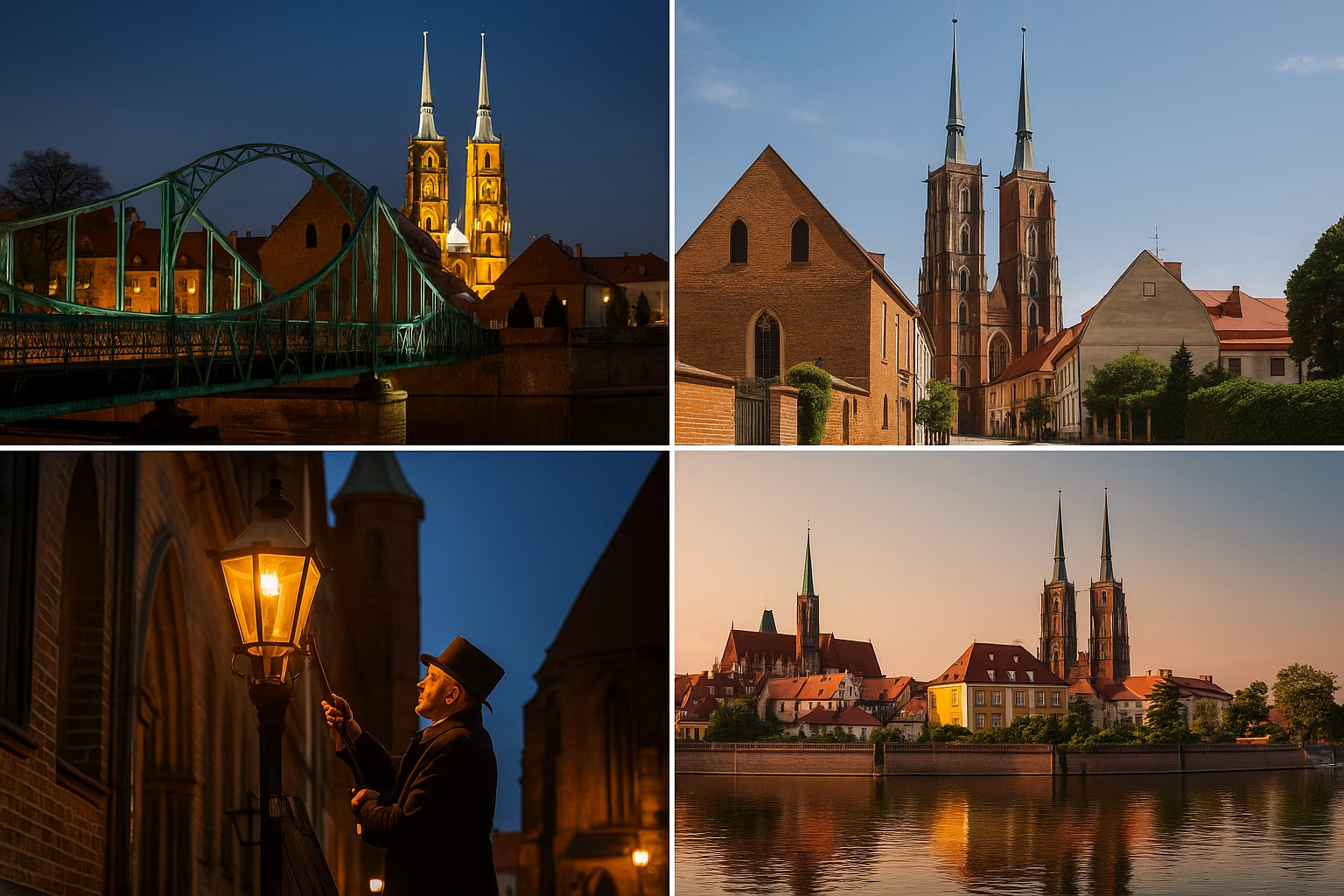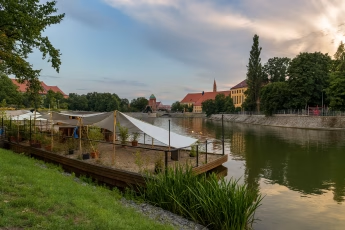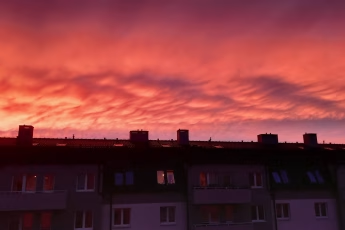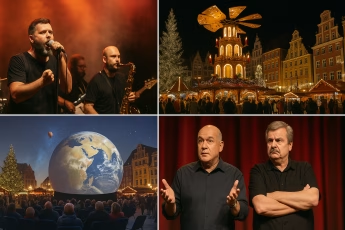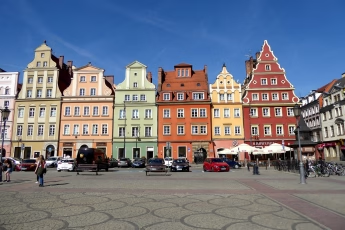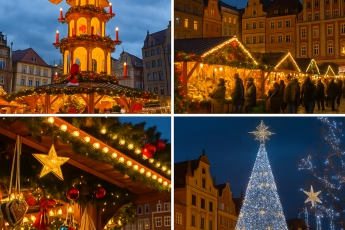- The role of Ostrów Tumski in the urban layout
- Access, approach and parking
- How Ostrów Tumski changes throughout the day and week
- Comfort factors: surface, crowding, noise
- The lamplighter and gas lamps – the evening face of Ostrów Tumski
- Practical scenarios for using Ostrów Tumski
- Seasonality – when Ostrów Tumski functions differently
- How to make the most of Ostrów Tumski in Wrocław
- Frequently asked questions about Ostrów Tumski
Ostrów Tumski in Wrocław is the oldest part of the city, but in everyday use it primarily serves as a calmer extension of the historic centre. It is not only a group of historic buildings, but a functioning piece of the city used as a walking route between the Market Square, the Oder riverbanks and the eastern part of Śródmieście, as well as a space for strolls, short stops and informal meetings.
The role of Ostrów Tumski in the urban layout
On a daily basis, Ostrów Tumski combines several functions. For some residents, it is a “shortcut” between the city centre and the area of Bema Square and further districts. For visitors, it is a natural continuation of a walk from the Market Square towards the Oder. For church communities and practising believers, it remains an important religious centre. In practice, these three patterns of use overlap, which at certain times increases pedestrian traffic on its narrow streets.
Ostrów Tumski remains an area with restricted car traffic – through traffic is prohibited, and vehicle access mainly concerns institutional services, residents and occasional deliveries. Most users move around on foot or by bicycle, treating the island as part of a longer walk rather than as an isolated attraction.
Access, approach and parking
The most natural way to reach Ostrów Tumski in Wrocław is on foot from the historic centre. A calm walk from the Market Square usually takes around 10–15 minutes and leads via University Square, the Market Hall or the Oder boulevards. In practice, this is also the most convenient option, as it avoids the need to search for parking in dense urban surroundings.
People using public transport typically get off at stops located directly next to the island. Within short walking distance are tram and bus stops such as “Hala Targowa” and “Katedra”, served by several lines running from different parts of the city. This means Ostrów Tumski can easily be included in a wider walking route without relying on a car.
Due to access restrictions, it is best to leave your car at one of the nearby parking areas, from which the island can be reached within a few minutes:
- parking in the area of Bema Square,
- parking spaces along Mieszka I Street,
- parking at Katedralny Square (access from Wyszyńskiego Street),
- parking near the Market Hall,
- spaces near the university building at Nankiera Square, from where a short walk leads to Ostrów Tumski.
In practice, this means that driving is treated more as support for a longer walk, rather than a way to “pull up directly next to the monuments”. During peak hours and weekends, spaces at the nearest car parks may already be occupied, so it is worth considering slightly more distant streets within the paid parking zone.
How Ostrów Tumski changes throughout the day and week
The rhythm of Ostrów Tumski is clearly dependent on the time of day and the day of the week. The same space can function as a calm walking route, a crowded pedestrian corridor, or almost exclusively a local passage used by residents.
| Time of day | Traffic pattern | Most comfortable for |
|---|---|---|
| Early morning (approx. 6:00–9:00) | Low traffic, individual walkers, residents on their way to work. | People seeking quiet, photographers, dog walkers. |
| Midday on weekdays | Moderate flow, organised groups, individual visitors. | Visitors wanting to see the cathedral and nearby churches without heavy crowds. |
| Weekends between 11:00–16:00 | Highest intensity, tour groups, trips, photo sessions. | Those comfortable with crowds and intensive photographic activity. |
| Evening after sunset | Traffic decreases, calm walks dominate, people appear to observe the lamplighter. | Contemplative walks, couples, those seeking a more intimate atmosphere. |
In practice, the most congested area is the central section – the surroundings of the Tumski Bridge and the entrance to the cathedral. Side streets and sections along the Oder tend to remain relatively calmer even during peak season, especially outside the main visiting hours.
Comfort factors: surface, crowding, noise
The most important factor affecting comfort on Ostrów Tumski is the surface. Various types of cobblestones and stone slabs dominate, which can be noticeable during longer walks, especially for people in less comfortable footwear, with strollers or with limited mobility. On rainy or winter days, it is worth considering the slippery surface and avoiding steeper sections.
Crowds concentrate mainly in narrow passages and near church entrances. On weekends and during the high season (from spring to early autumn), moving between the bridges and the cathedral requires more time – especially when guided groups, people taking photos and residents using the route as a simple A-to-B passage occupy the space simultaneously.
Noise levels are generally lower than in the very centre, but during peak hours a “sound corridor” effect occurs – conversations, church bells, occasional music from events and sounds from nearby streets overlap. Those particularly sensitive to stimuli usually feel more comfortable here in the morning or late evening, when the space clearly calms down.
The lamplighter and gas lamps – the evening face of Ostrów Tumski
One of the characteristic features of Ostrów Tumski is the still-functioning gas lamps. This area of the city contains over a hundred such lamps, forming a cohesive system of street lighting. Every day at dusk, a lamplighter appears to light them, and at dawn he extinguishes them. This ritual takes place throughout the year, with the timing changing according to sunset.
In practice, this means that in winter the lamplighter appears relatively early, while in summer much later – often when many visitors are already elsewhere in the city. Although the evening lighting attracts onlookers, it is not performed as a staged show: it is simply daily work, carried out efficiently, without prolonged pauses at each lamp.
Those who want to observe Ostrów Tumski in Wrocław calmly under the glow of gas lamps will find the best conditions along the side sections of Katedralna Street and the less frequented stretches of the riverbanks. On dry evenings, once the lamplighter has finished his work, the area gradually becomes quieter, yet remains well lit and suitable for a peaceful return walk towards the centre.
Practical scenarios for using Ostrów Tumski
Ostrów Tumski in Wrocław offers the most value when it is treated not as a point to “tick off”, but as part of a larger walking route. Several typical scenarios help use this space more consciously.
- Short walk from the Market Square with an alternative return route – entering the island via Piaskowy Bridge or Tumski Bridge, walking towards the cathedral, taking a short break by the Oder and returning towards the centre via a different path. This works particularly well outside peak weekend hours.
- Evening walk with observation of the lamplighter – arriving at Ostrów Tumski around dusk, walking along the main street and returning calmly via side riverbank paths. Comfortable shoes are advisable, as the cobblestones can be slippery after rain.
- Visit with children – when planning a walk, it is advisable to limit the number of crossings over bridges and intersections, especially during periods of heavier traffic. The proximity of water, uneven surfaces and numerous steps require greater attention from adults, but the route itself is not long and can be adapted to younger visitors.
- Walk combined with the Oder riverbanks – Ostrów Tumski can serve as an intermediate point on a longer walk along the river. This allows for shorter time spent in the most crowded zones and longer enjoyment of more open, green parts of the city.
Seasonality – when Ostrów Tumski functions differently
Spring and summer are the periods of highest pedestrian pressure on Ostrów Tumski. On weekends and during long weekends, the space often operates as a continuous walking corridor, where longer moments of quiet are hard to find. During these months, early mornings and late evenings on weekdays offer the greatest comfort.
In autumn, traffic gradually decreases, although organised groups and school trips are still visible. In winter, Ostrów Tumski becomes more “everyday”: many people primarily use it as a passage between public transport stops and other parts of the city. The dependence on weather is clearly noticeable – low temperatures and wind from the river tend to shorten walks and make them more functional.
During holiday periods and major city events, pedestrian intensity increases again. At such times, the space is used as a calmer complement to the heavily visited Market Square and nearby streets, which is worth considering when planning a route and choosing the time of your visit.
How to make the most of Ostrów Tumski in Wrocław
The most rational approach to Ostrów Tumski is to include it within a broader walking plan through the city. The choice of time of day directly affects comfort: mornings and evenings allow for calmer movement and more attentive observation of details, while midday offers a more intense but less comfortable crowd experience.
In practice, the quality of the visit is determined by three main factors: comfortable footwear suitable for cobblestones, conscious planning of access (walking or public transport instead of trying to park “right by the bridge”), and a realistic understanding of crowd levels in peak season. Ostrów Tumski in Wrocław works best as a tranquil link between more dynamic parts of the city, rather than as a standalone destination requiring prolonged stay.

